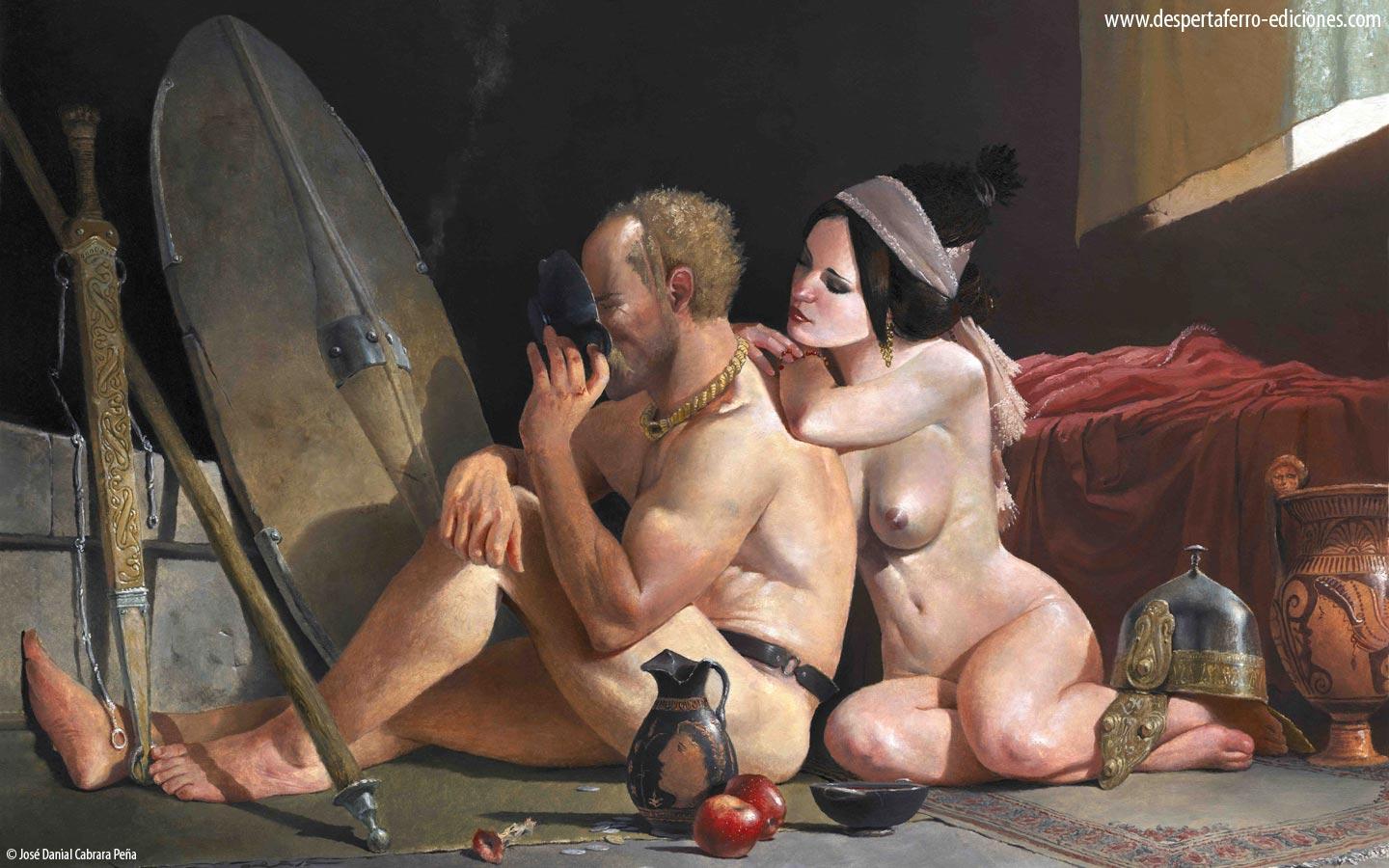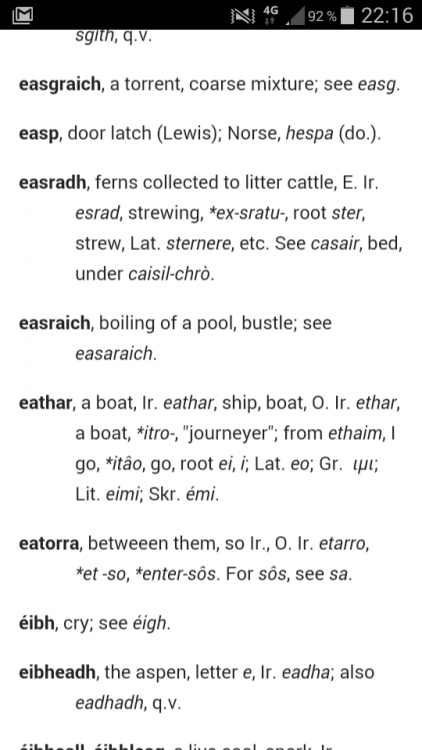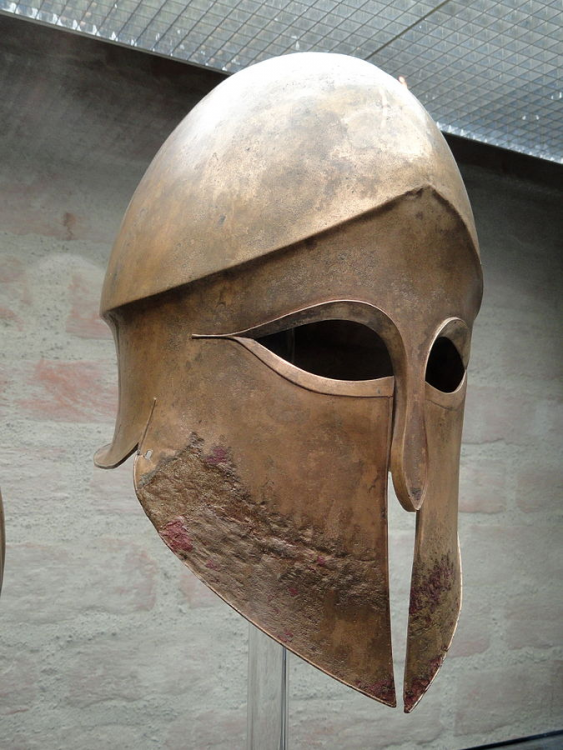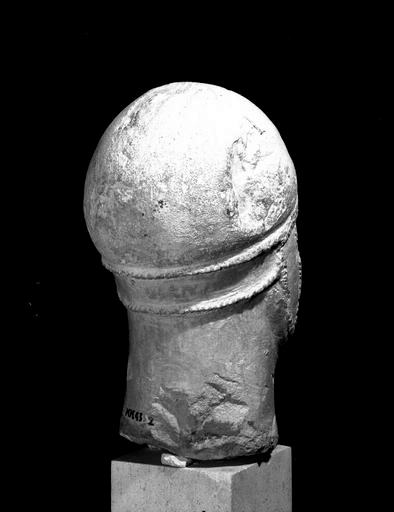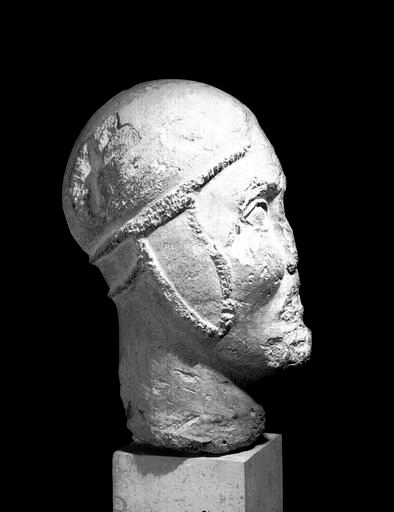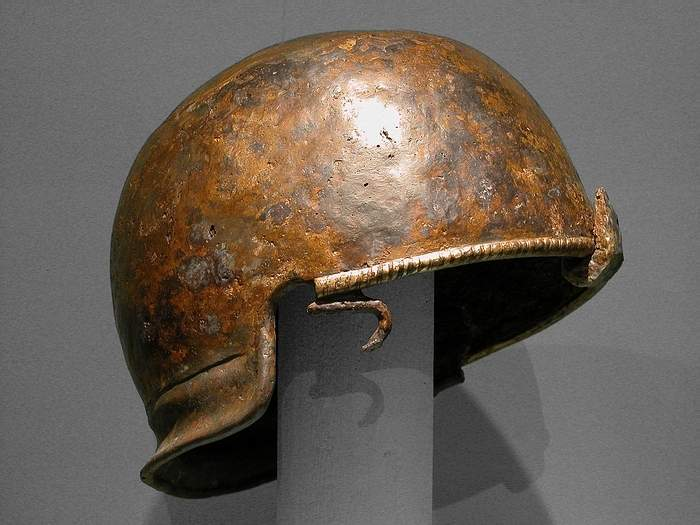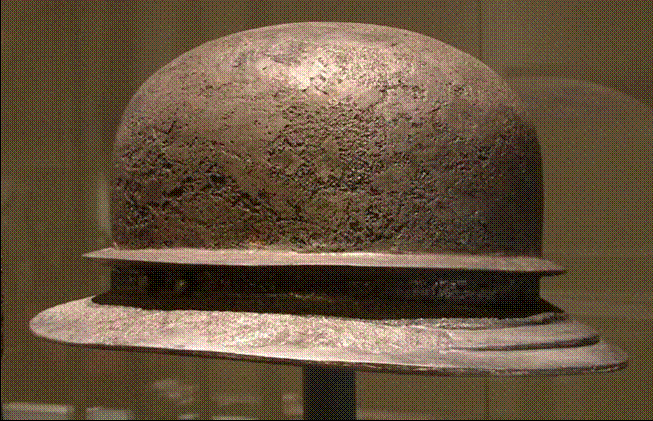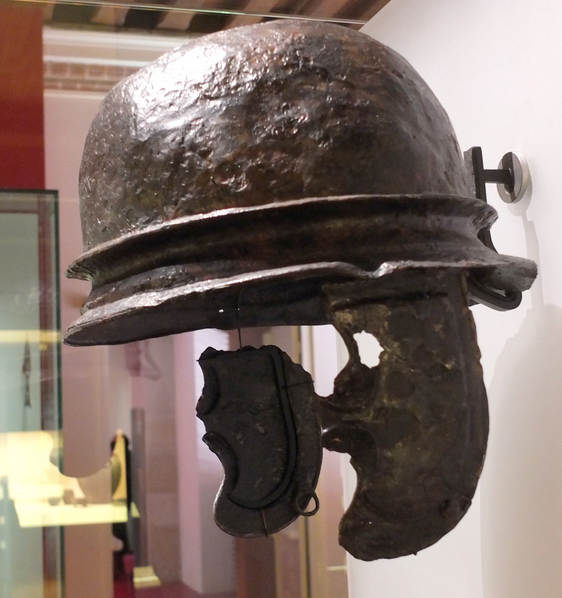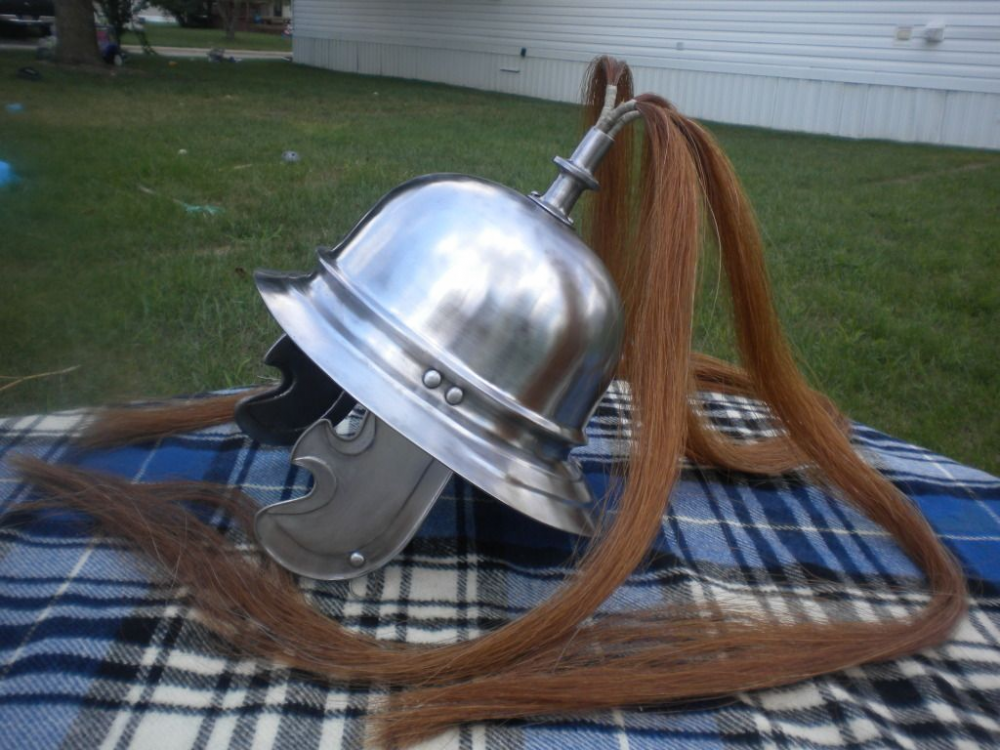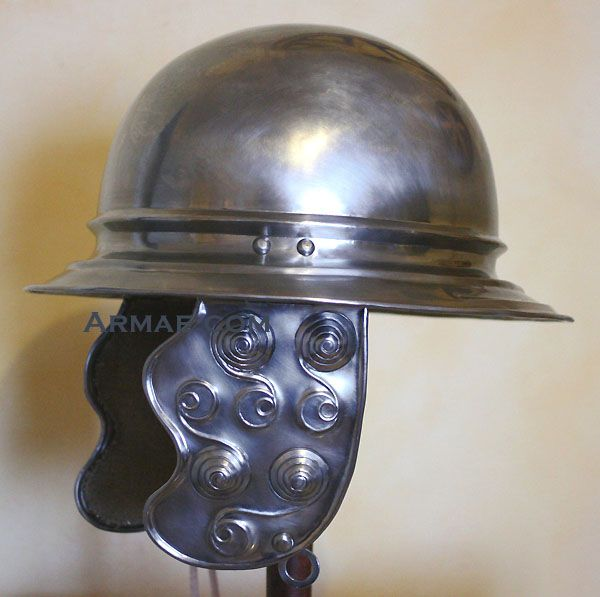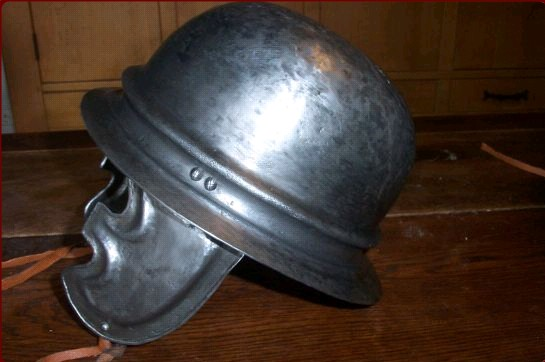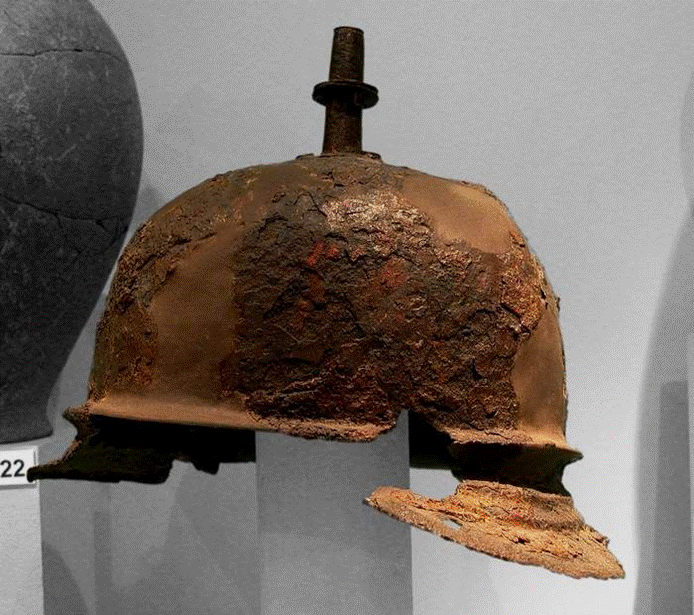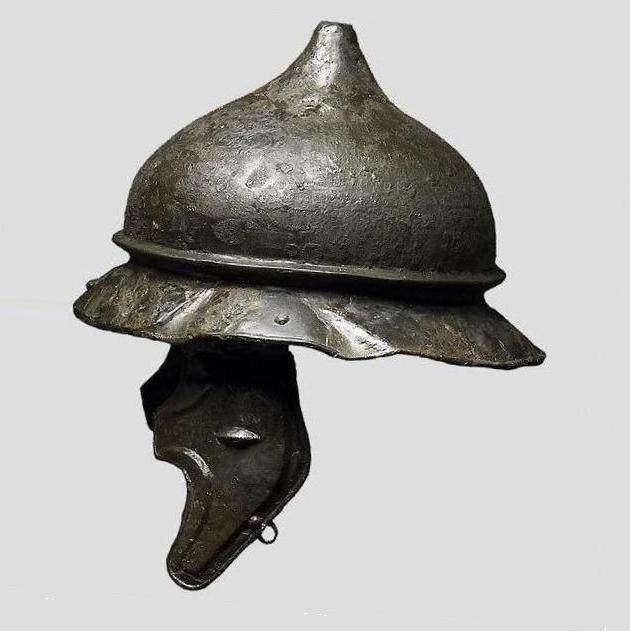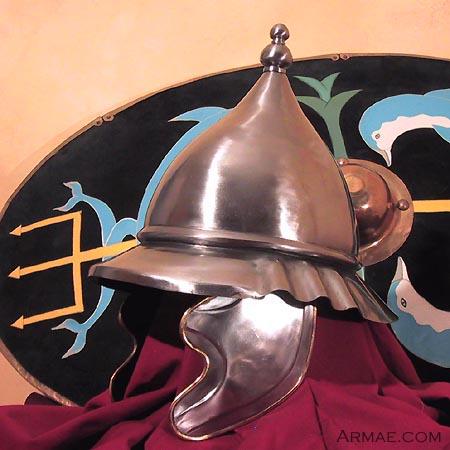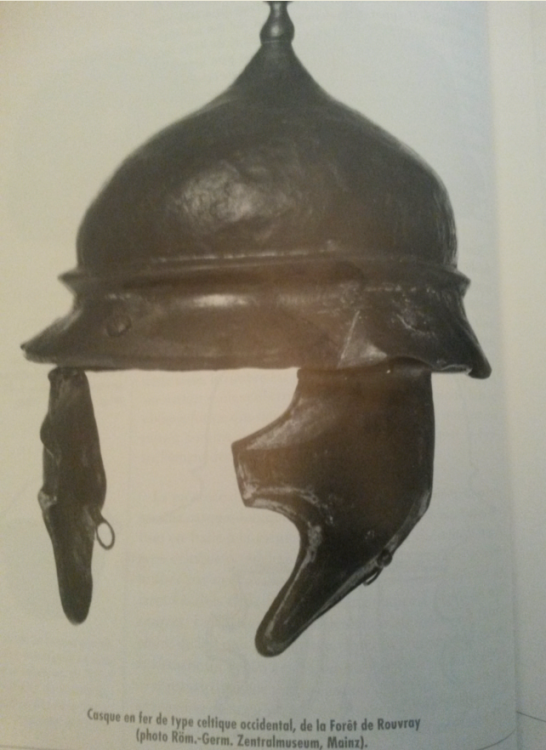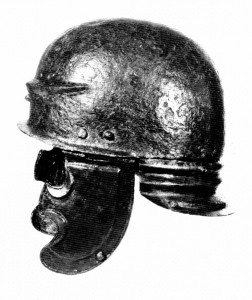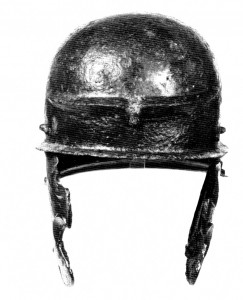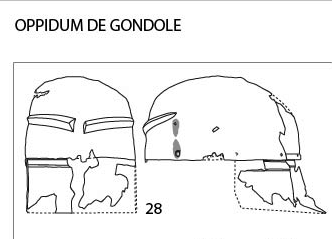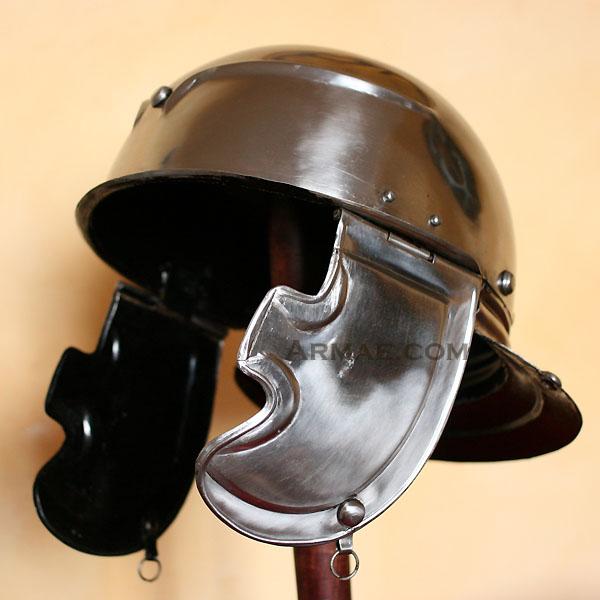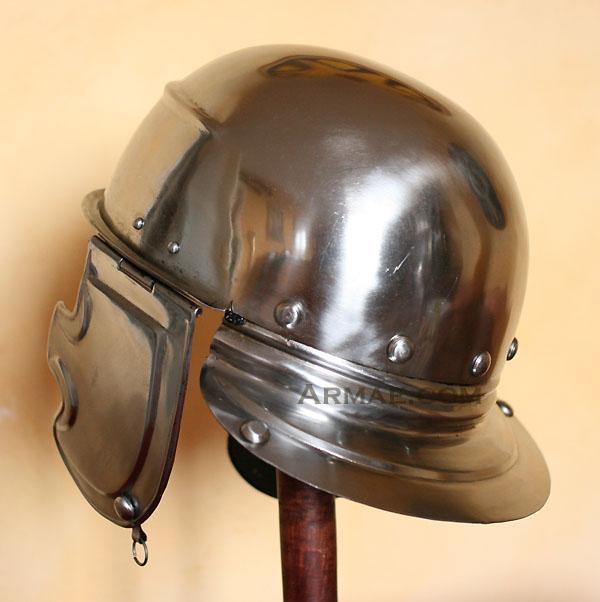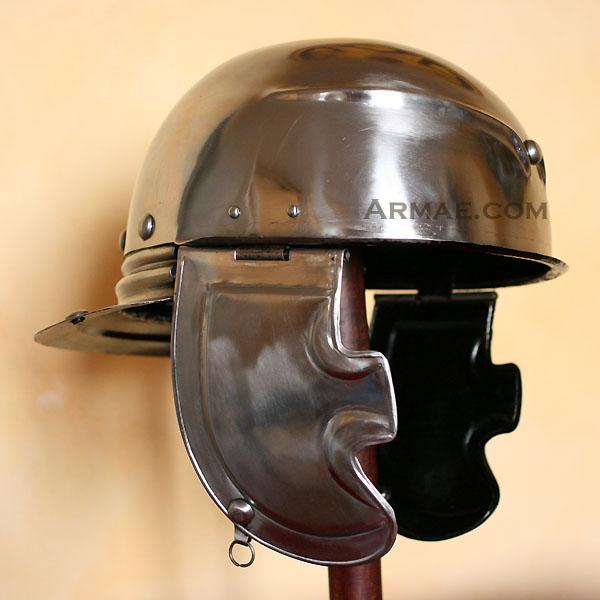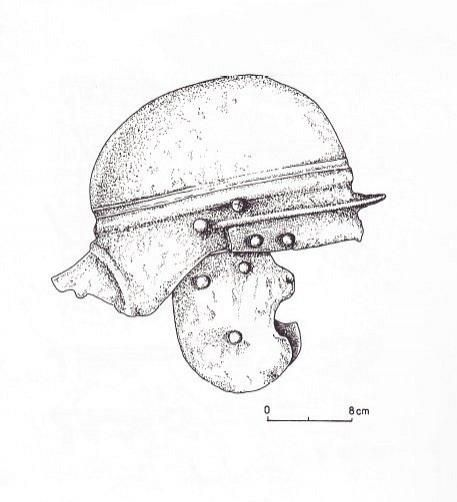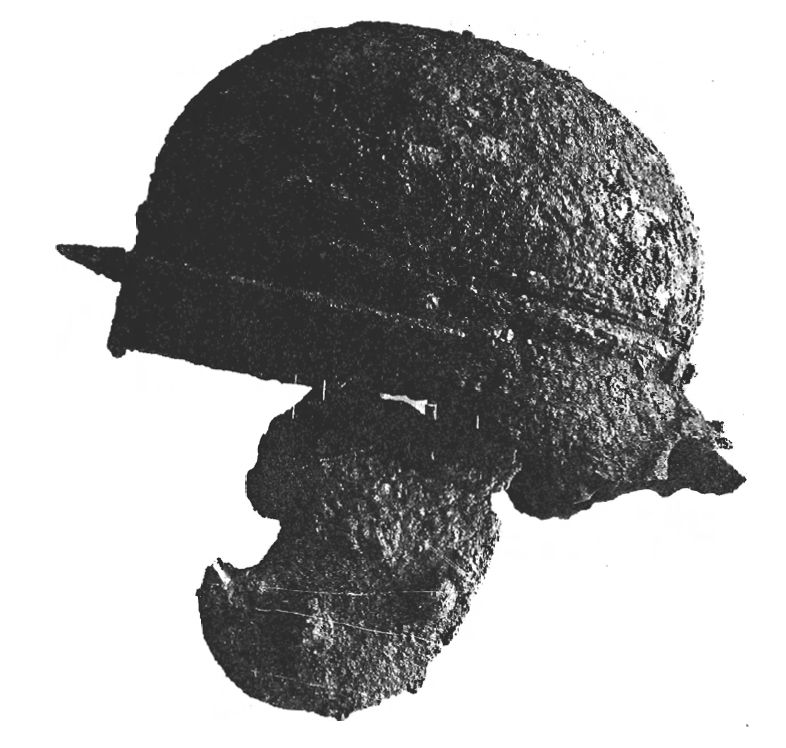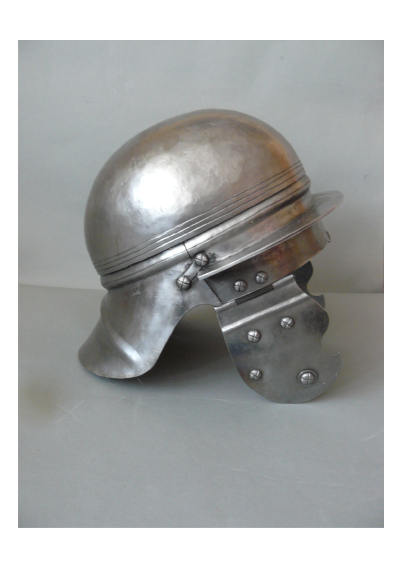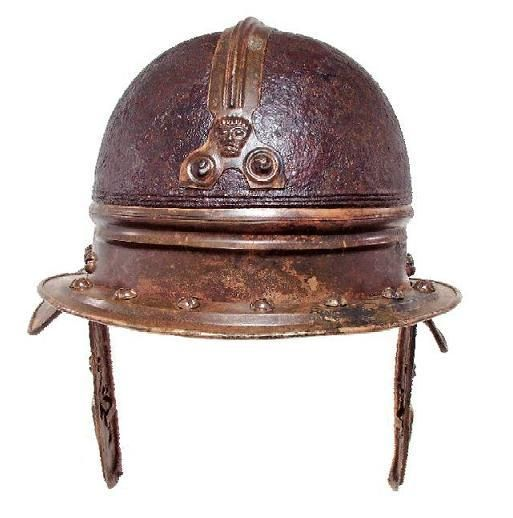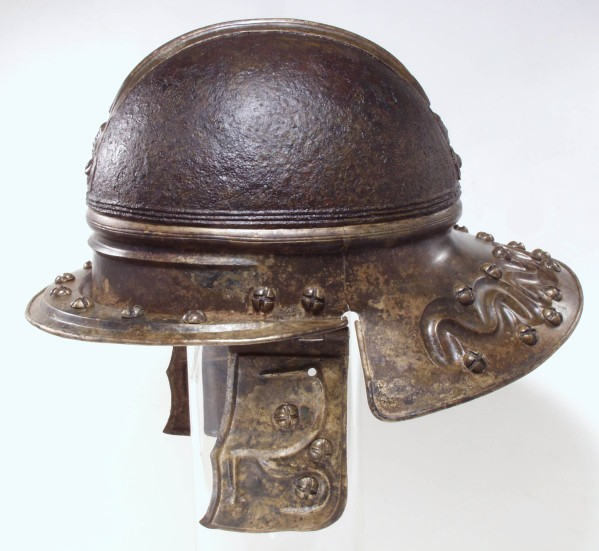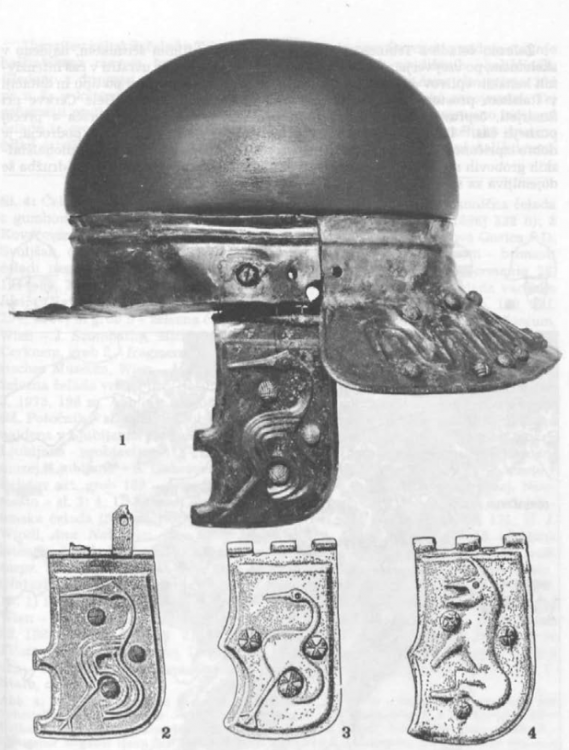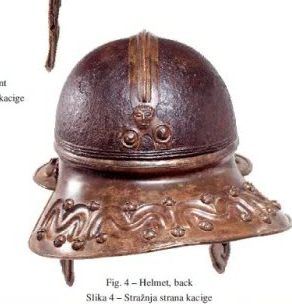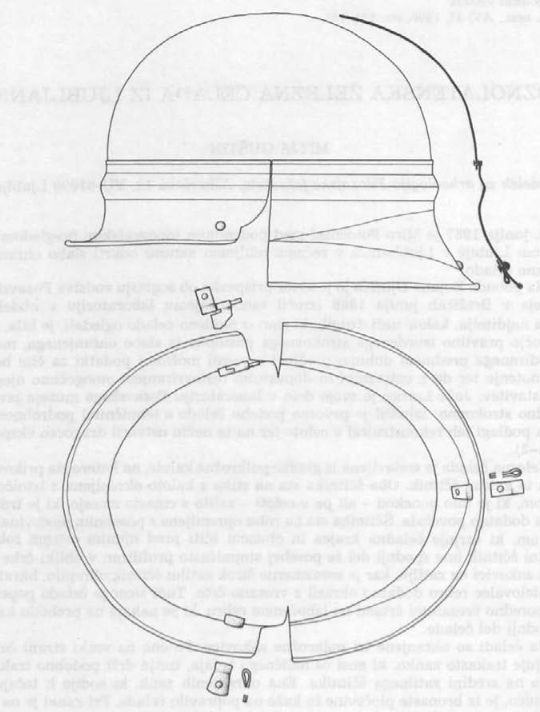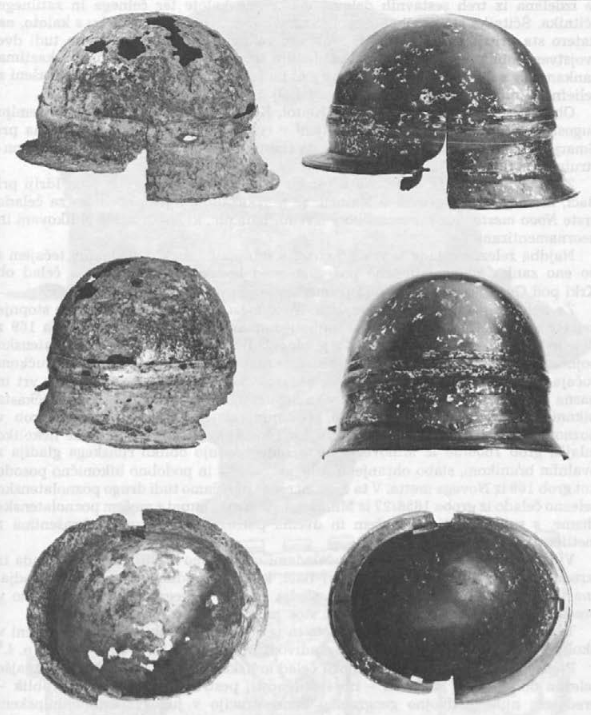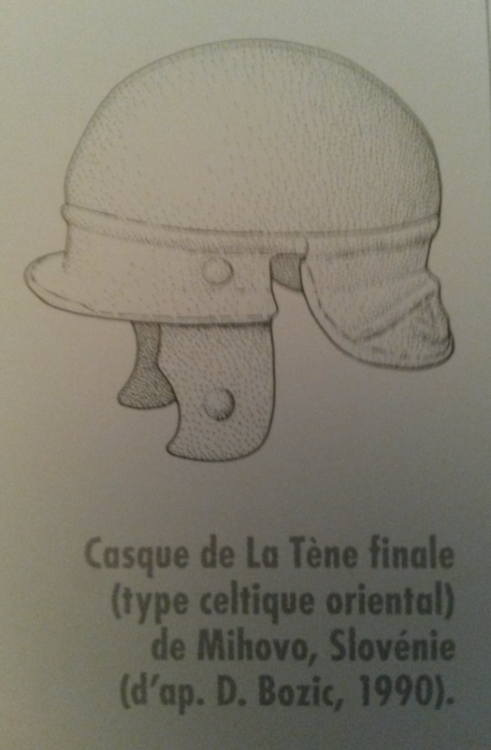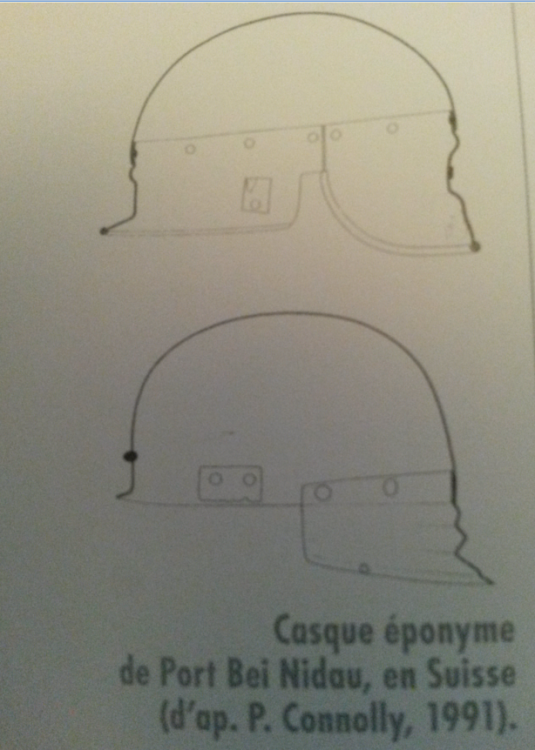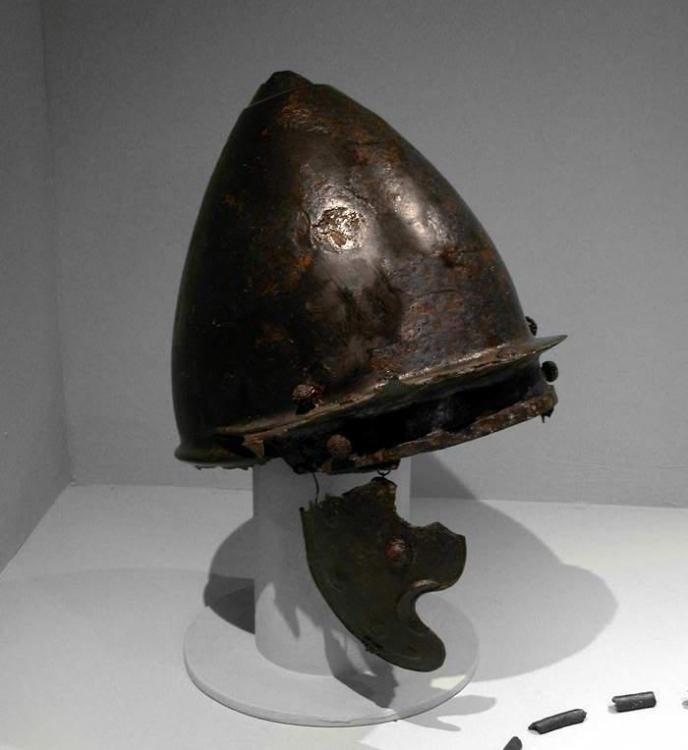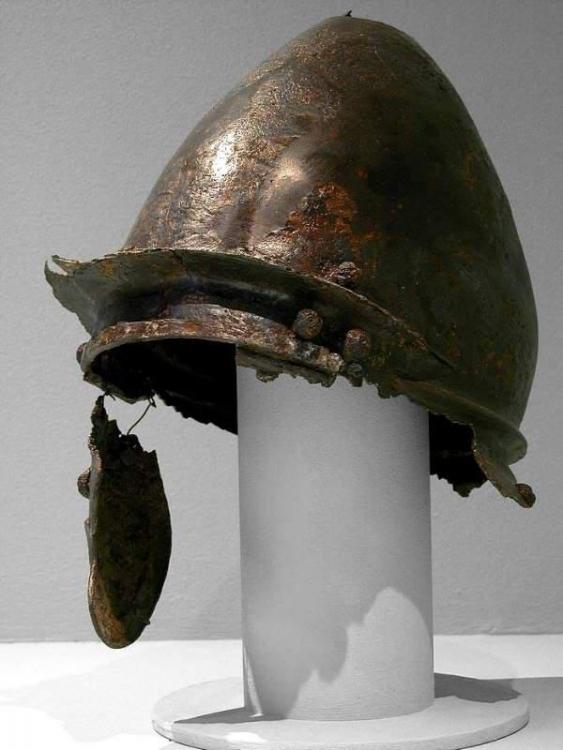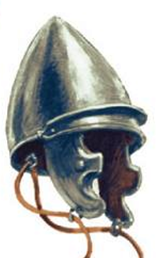-
Posts
2.401 -
Joined
-
Last visited
-
Days Won
83
Everything posted by Genava55
-
If people are interested in the subject, here a few helpful documents: Jonathan R. W. Prag: Troops and commanders: auxilia externa under the Roman Republic https://www.unipa.it/dipartimenti/cultureesocieta/riviste/hormos/.content/documenti_Hormos_2/J.PragTroops_and_commandersHormos2_2010_101-113.pdf Joëlle Napoli: Rome et le recrutement de mercenaires https://journals.openedition.org/rha/pdf/7055 La République romaine et le mercenariat au temps des Guerres Puniques https://journals.openedition.org/mcv/pdf/3892 Jonathan James McLaughlin: The Transformation of the Roman Auxiliary Soldier in Thought and Practice https://deepblue.lib.umich.edu/bitstream/handle/2027.42/111635/jjmcl_1.pdf?sequence=1&isAllowed=y Salvador Busquets Artigas: Los externa auxilia en el siglo final de la República romana (133-27 a. C.) https://ddd.uab.cat/pub/tesis/2015/hdl_10803_285743/sba1de1.pdf The only clear account during the Punic wars are the Celtiberians used successfully by P. Cornelius Scipion in 211 BC. There is also the Cretans archers during the battle of Trasimene in 217 BC. There is also 2000 Ligurians, Cretans and Numidians called auxilia in 171 BC under Publius Licinius Crassus. But the Treaty of Apamea is an example of political restriction of the mercenaries use in 188 BC.
-
As I said in a previous thread, there is a hypothesis that Basque and Iberian languages are related. Basque has known some evolution to unify the dialects in one language. But the structure of the language and the etymological roots are definitely pre-indo-european. I think it is an acceptable compromise for the game to use it for the Iberians. And anyway, the Celtiberians had a different culture with a different language.
-
If we have slaves that cannot guard the buildings or fight, but with an economic bonus, it should be a good system.
-
You should use the private messenger function of the forum for the next time.
-
You are off-topic, I think.
-
Maybe something with sapping and tunnel warfare: https://en.wikipedia.org/wiki/Tunnel_warfare#Ancient_Greece https://fr.wikipedia.org/wiki/Sape https://www.warhistoryonline.com/history/6-great-military-mines.html https://www.warhistoryonline.com/ancient-history/3-uses-mining-roman-sieges.html Julius Caesar, de bello gallico, book 2, 6: "The Gallic mode of besieging is the same as that of the Belgae: when after having drawn a large number of men around the whole of the fortifications, stones have begun to be cast against the wall on all sides, and the wall has been stripped of its defenders, [then], forming a testudo, they advance to the gates and undermine the wall: which was easily effected on this occasion; for while so large a number were casting stones and darts, no one was able to maintain his position upon the wall."
-
.thumb.jpg.b21ca1d0c15fb56b42c39b25a0a40815.jpg)
Hypaspists and armaments
Genava55 replied to Thorfinn the Shallow Minded's topic in Gameplay Discussion
-
You are confusing the game with the mod aristeia. You are currently writing on the subforum of aristeia, a mod dedicated to the bronze age and the aegean period.
-
Atlantic Bronze Age: https://en.wikipedia.org/wiki/Atlantic_Bronze_Age http://discovery.ucl.ac.uk/1546522/1/Armada and Martinon-Torres 2016 Albimeh AI.pdf Hallstatt: https://www.pintiavaccea.es/docpdf/Keltenblock.pdf http://www.regeszet.org.hu/images/angol/a_007.pdf https://www.cambridge.org/core/journals/antiquity/article/rethinking-early-iron-age-urbanisation-in-central-europe-the-heuneburg-site-and-its-archaeological-environment/46834B4C62C4A5ACE70DD1D8587F474A https://onlinelibrary.wiley.com/doi/pdf/10.1111/ojoa.12129
-
.thumb.jpg.b21ca1d0c15fb56b42c39b25a0a40815.jpg)
Others RTS - Discuss / Analysis
Genava55 replied to Lion.Kanzen's topic in Introductions & Off-Topic Discussion
-
I think this breast plate is based on the bronze cuirass of Marmesse which is dated from 9/8th century BC, Hallstatt then. I don't think there is any bronze cuirass during La Tène. The only armor known during the British pre-Roman Iron Age is the chain mail armor (one finding in Kirkburn). Maybe the best option for Boudicca should be jewelry.
-
You mean recording some audio files ? Is there a thread about it?
- 264 replies
-
- britons
- east celtic
-
(and 2 more)
Tagged with:
-
Luwian hieroglyphic inscription explains the end of the Bronze Age https://phys.org/news/2017-10-luwian-hieroglyphic-inscription-bronze-age.html Lost civilization of 'sea people' may have sparked world war over 3,000 years ago https://www.mnn.com/lifestyle/arts-culture/stories/lost-civilization-sea-people-may-have-sparked-world-war-over-3000-years-ago Another long-forgotten Anatolian civilization rising from shadows https://www.dailysabah.com/history/2015/05/21/another-long-forgotten-anatolian-civilization-rising-from-shadows Who are the Luwians? https://luwianstudies.org/who-are-the-luwians/
-
Ok. Sent you a message.
- 264 replies
-
- 1
-

-
- britons
- east celtic
-
(and 2 more)
Tagged with:
-
It is not mandatory. If you want to put me in the credits, a very small thing is enough. You are doing, you and others artists, the most important job. I'm actually just giving you work to do By the way, do you have any remark about the document? Is it practical for you? I want to be the most helpful I can.
- 264 replies
-
- britons
- east celtic
-
(and 2 more)
Tagged with:
-
The problem with the ancient marine is the lack of informations. Actually there is only a few boats found that could be celtic-like: The Dover Bronze Age Boat (long for 8-15 men). The Ferriby Boats (from 6 to 20 men). The Hanson Log Boat (long for 1 or 2 men). The Flag fen Early Iron Age Logboat (long for 1 or 2 men). The Canewdon Paddle (long for 2-4 men). The Hjortspring boat (long for 12-20 men). The Arles Rhône 3 Gallo-Roman 1st century AD (31 meters of long). Edit: @GunChleoc I checked a bit the context of the word longo- and it seems better suited for longilineal/willowy ship carrying a few men. Firstly, the word is also used in stream context, for example "Longroi" and "Longroy" in France, where the place names are made from Longo- and Rito- (ford) and situated on two small rivers, Voise and Bresle. The Voise is far from the sea and the Bresle goes in the sea. Another example with "Longuenoë" made from Longo- and Nauda (wetland), far from the sea. I see in the word longos a generic term for polyvalent willowy ship like the previous foundings above. Thus in my opinion, longos can be used both for fishing ships and merchant ships (and even small raiding ships but not well suited in the context of the game). The war ship of the Celtic factions is only based on the description of Caesar. The name comes from Caesar too: Pontones. Some linguists suspect a latin origin, others suspect a Gallic origin from Ponto/Pontos. The others names suggested in Gaulish dictionaries for the boats and ships are Nauson and Bacca/Baccos. But they are not certain.
- 264 replies
-
- britons
- east celtic
-
(and 2 more)
Tagged with:
-
Why a military vessel is the first thing that comes up to your mind about a bigger ship? "Long" is also used for small ship in old irish. Probably it is a common word for any longilign vessels like the ones they found in Britain and in Denmark. There is a bigger early Gallo-Roman long ship that could fit in but it is still not a military one. Probably a loan word from old anglo-saxon Bat/Bad (boat). Maybe something with itro-
- 264 replies
-
- britons
- east celtic
-
(and 2 more)
Tagged with:
-
I did a design document with some pictures (not all I put in the previous document) for the Gauls. I did some modifications about the names of the units, I abandoned my idea of regional names (too restrictive) but I keep my idea of two reform: Gallic sovereignty reform and Belgian uprising reform. The unit description is at the end. Do you have any suggestion/remark/error? https://www.docdroid.net/9fLYce0/gauls-design.pdf
- 264 replies
-
- 1
-

-
- britons
- east celtic
-
(and 2 more)
Tagged with:
-
.thumb.jpg.b21ca1d0c15fb56b42c39b25a0a40815.jpg)
===[COMMITTED]=== Celtic Unit Helmets
Genava55 replied to Alexandermb's topic in Completed Art Tasks
Thanks. It is also a montefortino helmet then (from Castelrotto). -
.thumb.jpg.b21ca1d0c15fb56b42c39b25a0a40815.jpg)
===[COMMITTED]=== Celtic Unit Helmets
Genava55 replied to Alexandermb's topic in Completed Art Tasks
Ah. Basically it is this: Your work is very nice. The Alésia (C), the Coolus (B) and the Montefortino (D-H) seem correct to me (besides the use of bronze for Alésia helmet and the use of iron for Coolus helmet). Which helmet is the A with the little thing on the top? Just a word about the color, it exists hundreds of copper alloys and modern helmet replicas are based on copper/zinc alloys, not bronze (copper/tin). Copper/zinc helmet existed but mostly during the Roman Empire and not for all helmets. Today, it exist two major bronze types used: Tin Bronze and Phosphor Bronze. Tin Bronze is the only one known during ancient times and generally with tin percentage between 6 to 10%. https://copperalliance.org.uk/about-copper/copper-alloys/ Tin Bronze with 10-12% of tin: http://www.metalreference.com/CU_907.html Corinthian Helmet in good condition: -
.thumb.jpg.b21ca1d0c15fb56b42c39b25a0a40815.jpg)
===[COMMITTED]=== Celtic Unit Helmets
Genava55 replied to Alexandermb's topic in Completed Art Tasks
Millennium A.D.? -
.thumb.jpg.b21ca1d0c15fb56b42c39b25a0a40815.jpg)
===[COMMITTED]=== Celtic Unit Helmets
Genava55 replied to Alexandermb's topic in Completed Art Tasks
Origin of the Coolus-Mannheim? Here a native Southern Gallic helmet, type Toulouse-Estarac in iron - 100/70 BC : -
.thumb.jpg.b21ca1d0c15fb56b42c39b25a0a40815.jpg)
===[COMMITTED]=== Celtic Unit Helmets
Genava55 replied to Alexandermb's topic in Completed Art Tasks
Helmet type Alésia - 1st century BC Helmet type Agen - 1st century BC Helmet type Forêt de Rouvray - 1st century BC Helmet variante of Forêt de Louviers - 1st century BC Helmet type Port - 1st century BC Helmet type Port variant of Mihovo: Helmet type Siemiechowa (Poland) - 1st century BC Helmet type Mihovo - 1st century BC Helmet type Boé - 1st century BC -
Yeah my bad. Linguistic is not my specialty and modern Celtic languages are so complicated because of their divergent history. I'm more interested in ancient history, not medieval history. Edit: Here an interesting comparison between the celtic languages: https://www.academia.edu/6990656/Gallo-Brittonic_vs._Insular_Celtic_The_Inter-rela_tion_ships_of_the_Celtic_Languages_Recon_sidered
- 264 replies
-
- britons
- east celtic
-
(and 2 more)
Tagged with:
-
.thumb.jpg.b21ca1d0c15fb56b42c39b25a0a40815.jpg)
===[COMMITTED]=== Celtic Unit Helmets
Genava55 replied to Alexandermb's topic in Completed Art Tasks
In theory yes. But in practice we don't have any proof... There are some burials with Celtic and Roman weapons mixed but they are from the post-Gallic Wars period and probably represent auxiliaries. The Coolus-Mannheim origin is unknown and specialist like Michel Feugère thinks it is a helmet from Roman tradition. We don't know if this helmet is used by both Celtic and Roman warriors as an usual helmet. The Coolus-Mannheim could really be an evolution of the previous Montefortino. My point of view is that I disagree with Feugère's position. Firstly because he is a "Roman Supremacist" and can be excessive on his positions. For example he said that the helmets type Port aren't from a Gallic tradition but from a Gallo-Roman tradition, criticizing the idea that Gallic helmets were the sources of inspiration for the imperial helmets. Gladly, new findings in Gergovia prove him wrong by showing the existence of the type Port during the Gallic Wars in native burials. In my opinion, the Coolus-Mannheim comes from Gallia Narbonensis and is a helmet used by the early Gallo-Roman auxiliaries. The basic design is clearly similar with the Late montefortino helmet and with its successor the Buggenum, both without paragnathids, but the absence of the top tip is probably from a local tradition (there is a celtic relief depicting a similar helmet but with paragnathids). Julius Caesar is the proconsul of Gallia Narbonensis and he got a lot of issues with Rome during his campaign. It should have been much easier for him to produce these helmets to supply his legionaries and his auxiliaries.

